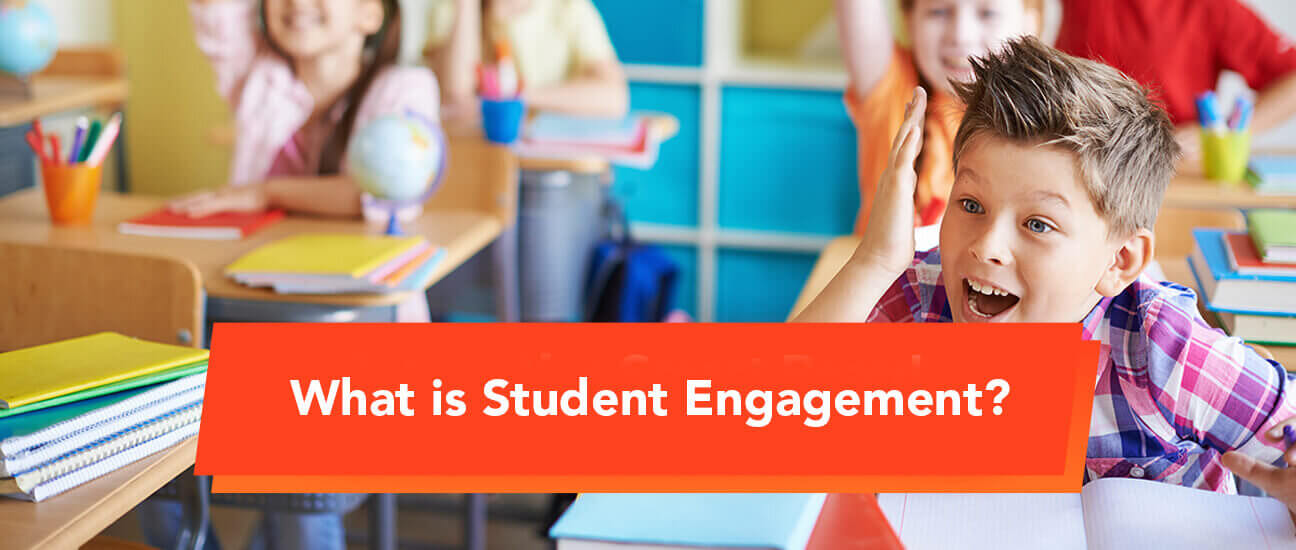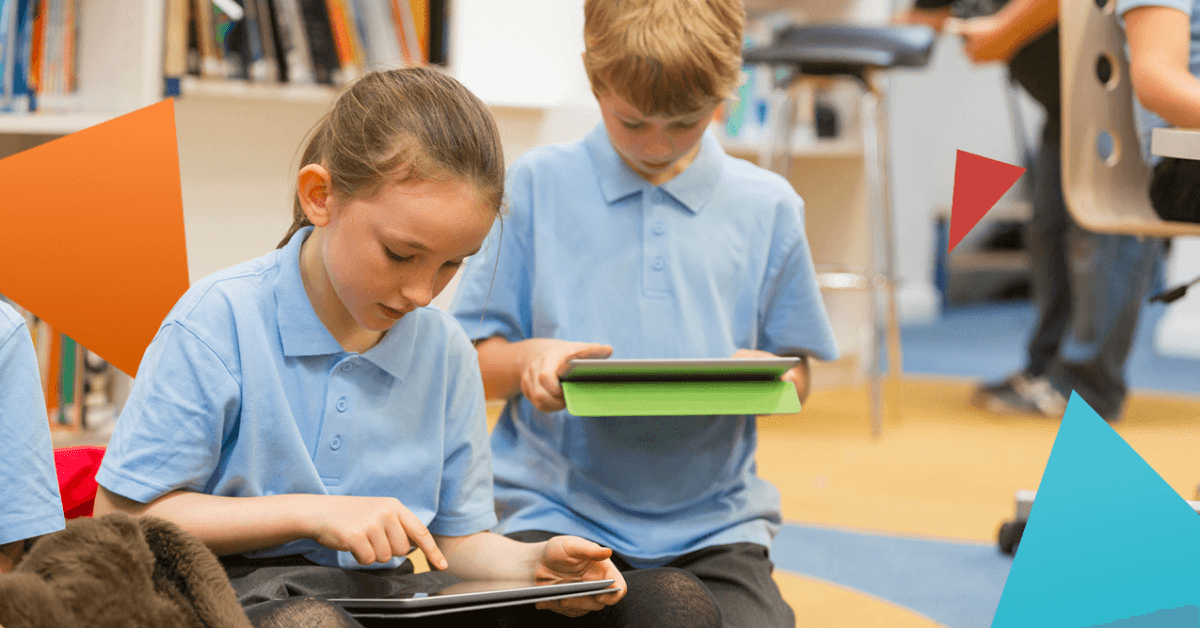Published on August 8th, 2022
What is Student Engagement?
16 minute read

Student engagement is a commonly discussed concept that all educators agree is vital. It usually refers to students’ active participation, involvement, and interest in learning. It encompasses their willingness to interact with educational materials, teachers, and peers, leading to improved academic performance and a positive learning experience.
Engaged students are more likely to be motivated, attentive, and invested in their studies, fostering a conducive environment for effective learning and personal growth.
Despite the discourse around the topic, it can sometimes feel a little confusing. Just as there are countless ways to engage students, there are even more ways to define and measure engagement.
In this blog, we help you understand the main concepts at the heart of engagement in schools. We will:
- Discuss the differing definitions of student engagement to establish what matters.
- Help you understand why student engagement is critical for you as an educator.
- Explain how you can track and measure student engagement.
- Examine the differences in student engagement in different age groups.
Defining student engagement
Whilst different researchers and educators define student engagement slightly differently from one another, certain commonalities prevail across their understandings.
Studies from the University of Nebraska state student engagement as being:
“An individual’s interest and enthusiasm for school, which impacts their academic performance and behaviour.”
The Glossary of Education Reform digs a little deeper, defining student engagement as:
“The degree of attention, curiosity, interest, optimism, and passion that students show when they are learning or being taught, which extends to the level of motivation they have to learn and progress in their education.”
Student engagement is rooted in the idea that learning improves when students are curious, interested, or inspired. Conversely, learning is negatively impacted when students are dispassionate, bored or otherwise disengaged. This is why improved student engagement is at the forefront of educators’ minds worldwide.
As the world of education evolves, our understanding of student engagement continues to adapt. Today, teaching can occur online, in hybrid arrangements, and in the classroom, so definitions of student engagement have expanded and changed as we learn more about the student experience.
The three dimensions of student engagement
The three main kinds of engagement in the classroom are:
1. Emotional engagement
Emotional engagement refers to students’ feelings and attitudes towards their teacher/teaching techniques, learning environment, and general school experience. It also includes a sense of belonging within the student community and how valuable they view their work.
Teachers can foster emotional engagement by creating a positive and supportive classroom climate, showing genuine care and interest in their students, and recognising their strengths and needs. Encouraging open communication, providing constructive feedback, and celebrating their achievements can also boost emotional engagement.
2. Behavioural engagement
Behavioural student engagement addresses how attentive and active students are in the classroom. Educators often promote behavioural engagement by designing interactive lessons, incorporating hands-on activities, and offering opportunities for collaboration and discussion.
Clear instructions and expectations help students understand what is required of them, and providing choices and autonomy can further motivate them to be actively involved in their learning.
3. Cognitive engagement
This refers to how intrinsically motivated and invested students are in their learning process and how much they regulate and take ownership of it. Engaged students demonstrate critical thinking, problem-solving, and a willingness to challenge themselves intellectually.
Enhancing cognitive engagement includes:
- Presenting challenging and meaningful content
- Encouraging higher-order thinking skills
- Using various teaching strategies to cater to diverse learning styles.
Encouraging students to ask questions, explore topics in-depth, and apply knowledge to real-world situations can also promote cognitive engagement.
Students learn best when all three of these areas of engagement are met.
How to measure student engagement
Using the three dimensions of student engagement provides the ideal baseline as you begin to monitor student engagement, and establishing which of these have been met on a student-by-student level gives you the insights you need to make better decisions for learners. Popular tools and tactics you can use to measure these individual dimensions and define student engagement include:
1. Classroom participation
You can use how a student participates in classes to measure their engagement. Observe and record their active involvement during class discussions, group activities, and question-answer sessions.
It’s best to consider individual student personalities. For example, naturally shy students will be less inclined to speak up and actively participate in many ways, despite being incredibly engaged in the subject matter.
2. Undertaking formal assessments
Formal assessments are a standard method of measuring engagement. Use tests or exams regularly to measure student progress and highlight areas of weakness for students. You can then utilise this knowledge to help you tweak your approach to better engage students in key areas of concern.
3. Student feedback
Anonymous surveys can provide critical insights your learners may be apprehensive about sharing openly. You could also ask students to mark their participation each week to establish how engaged they feel they are.
By engaging in this type of measurement on both a macro (a student’s engagement with their education as a whole) and micro level (a student’s engagement on a course-specific basis), you gain a much better picture of how engaged your pupils are and arm yourself with the ability to quickly course correct should students start to disengage.
Why is student engagement so important?
Educators hold student engagement in high esteem because they take an active role in their learning when they are engaged.
In an era where hybrid learning environments are becoming more common, keeping the student experience consistent can be difficult. However, the increase in remote learning spurred creative methods of engaging students in hybrid learning classes and remote learning environments.
Even in challenging times, a sense of solid student engagement must be at the forefront of teaching, as it tips the scales on a range of important factors, including:
- Academic achievement
- Test scores
- Learning
- Class attendance
- School retention
- School graduation
- Academic resilience
An engaged student is more likely to achieve greater academic success in school. Another noteworthy benefit is that students who exhibit high levels of student engagement are less likely to fall victim to potential adolescent trouble, often related to exclusion rates or not reaching the next phase of school, such as higher education.
While multiple definitions of student engagement have each seen their retooling through time, there is common ground regarding its importance in education. Consistent student engagement is key to student success inside the classroom and beyond.
Student engagement in different age groups
Student engagement can vary across different age groups in the UK, as each stage of education has unique characteristics and developmental considerations. Here’s an overview of what student engagement can look like in different age groups.
Early years (ages 3-5)
In the early years, student engagement is characterised by hands-on, play-based learning, as many young children learn kinaesthetically. Children are naturally curious and eager to explore their environment. Engaged students at this age might be actively participating in creative activities, asking questions, and showing enthusiasm for learning through play and interaction with peers.
Primary school (ages 5-11)
In primary school, student engagement fosters a positive attitude towards learning. Engaged students are attentive in class, eager to participate, and demonstrate an interest in various subjects. They may show enthusiasm for projects, be motivated to complete assignments and build positive relationships with teachers and classmates.
Secondary school (ages 11-16)
During secondary school, student engagement can be influenced by the diversity of subjects and the need for a more structured learning approach. Engaged students might actively participate in classroom discussions, seek additional learning opportunities, and show interest in extracurricular activities. They may also take on responsibilities within school clubs or student councils.
Further education (ages 16-18)
Student engagement activities often focus on specialised subjects and career pathways in further education, such as sixth form or college. Engaged students may actively participate in group projects, contribute to discussions, and take on leadership roles. They might also be involved in work experience or internships related to their chosen field.
Higher education (University level)
Student engagement at the university level is characterised by greater independence and self-directed learning. Engaged students may take initiative in research projects, participate in seminars and workshops, and engage in academic debates. They might also participate in campus activities, student societies, or volunteering opportunities.
What are the four keys to student engagement?
The four keys to student engagement are:
- Relevance: Learning experiences should be relevant to each student’s interests, experiences, and aspirations. When the content connects to their lives, they are more likely to be motivated and engaged.
- Relationships: Positive relationships with teachers and peers create a supportive learning environment. When students feel valued, respected, and connected, they are more likely to engage in learning.
- Responsibility: Allowing students to take ownership of their learning fosters a sense of responsibility and autonomy. Students become more engaged and invested when given opportunities to make choices, set goals, and direct their education.
- Rigour: Provide challenging and intellectually stimulating tasks to encourage students to stretch their abilities and persevere through difficulties. When tasks are appropriately challenging, students are more likely to be engaged and feel accomplished when they succeed.
By incorporating these four keys into the educational approach, teachers can enhance student engagement and create a more effective and enjoyable learning experience for students.
Advancing student engagement with Promethean
Promethean gives schools and teachers the tools to drive meaningful, sustained student engagement in hybrid and in-person learning environments.
The Promethean Activpanel 9 is an interactive display designed to support student engagement and enable intuitive learning experiences with more opportunities for interactivity. Every panel comes preloaded with premium teaching tools and student engagement features, including infinite canvas, screen capture, screen share, spinner, timer, and more.
As we look to the future of student engagement, it is clear that technology will play a critical role. So, bringing in new ways to increase student engagement in the classroom with technology can prepare schools for where that engagement is heading.
Schedule your free demo with a Promethean expert today!
The Promethean blog is the place for tips on increasing and managing engagement, including guides on:
- How to Engage Disengaged Students
- How Do You Keep Students Engaged at the Beginning and End of a Lesson?
- 10 Tips on How to Monitor Student Engagement
- How to Engage Students Without Relying on Technology
- How to Engage International Students: 12 Strategies and Tips
- Seven Strategies to Keep Students With ADHD Engaged in the Classroom
FAQs
What is good student engagement?
A positive student engagement experience is often characterised by good behaviour, positive feelings and student thinking and effort. Positively engaged students are often curious, interested and inspired by their learning.
However, It’s also important to recognise that students will engage in different ways, and teachers can implement student engagement strategies to increase their students’ emotional, cognitive and behavioural engagement.
How do you promote student engagement in the classroom?
Teachers can implement various student engagement strategies to engage students in their learning. Teachers should provide an assortment of content and present information in multiple ways. Not only will this benefit students’ different learning styles, but it will also create a fun and engaging learning environment.
Creating meaningful conversations is also beneficial when engaging students in their learning. Engaging with student interests and incorporating these into the conversation will likely make a more engaged classroom.
What are engagement activities for students?
Teachers and support staff can implement engagement activities online and in the classroom to motivate students better and take their learning to the next level. Different learning activities will engage students differently, depending on their learning styles.
Engagement activities that can be executed across the classroom include frequent discussion and hands-on learning activities through active learning strategies, movement, classroom games and rewards. Incorporating new technology into the classroom, such as an interactive display like the ActivPanel from Promethean, can enable intuitive learning experiences and drive sustained student engagement in various learning spaces.




